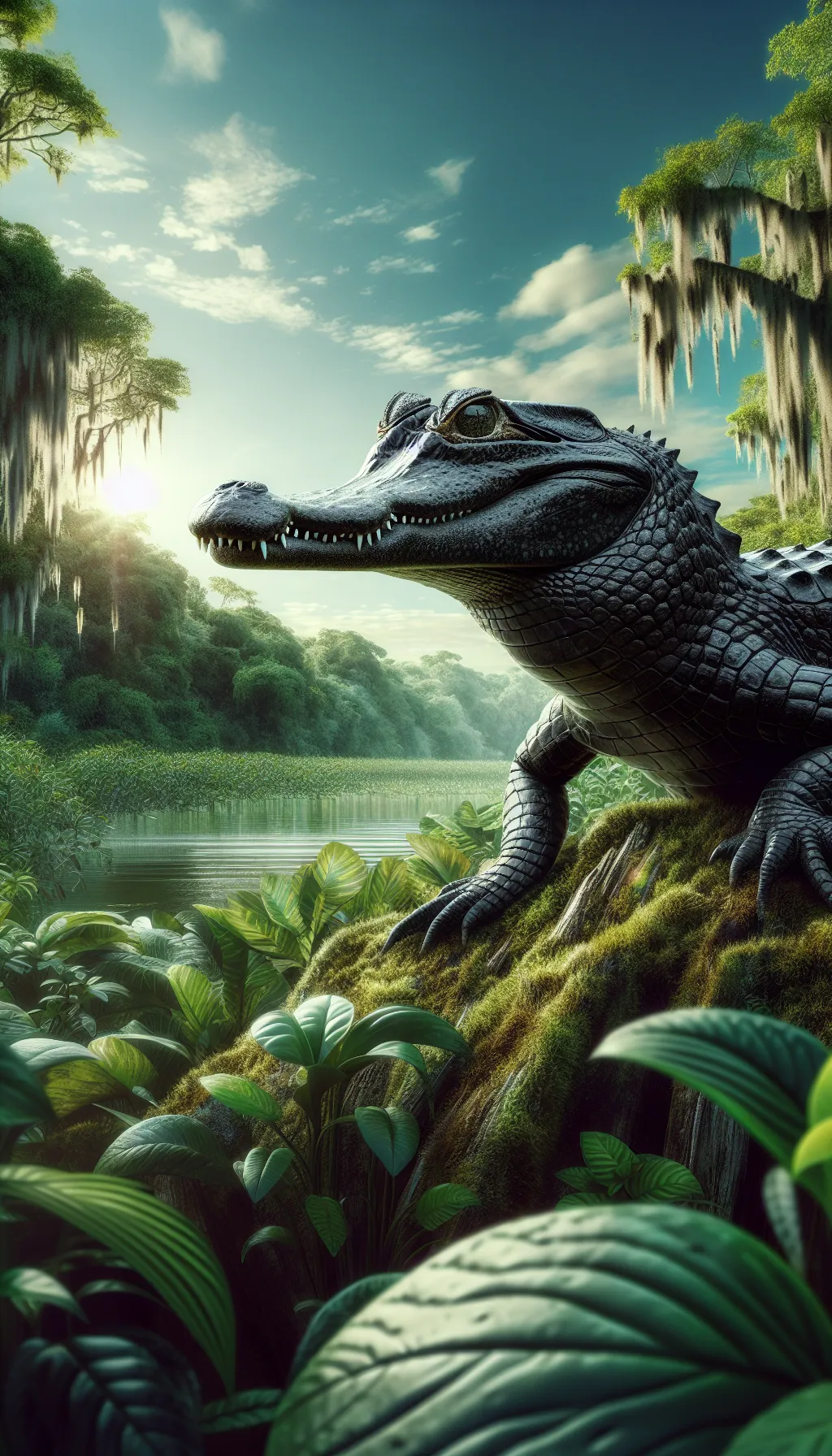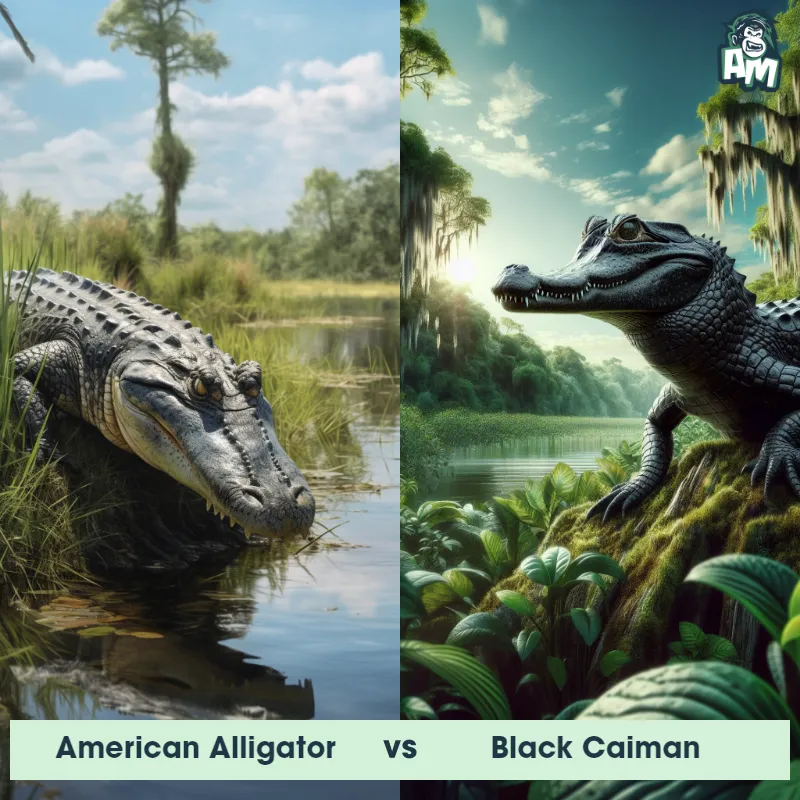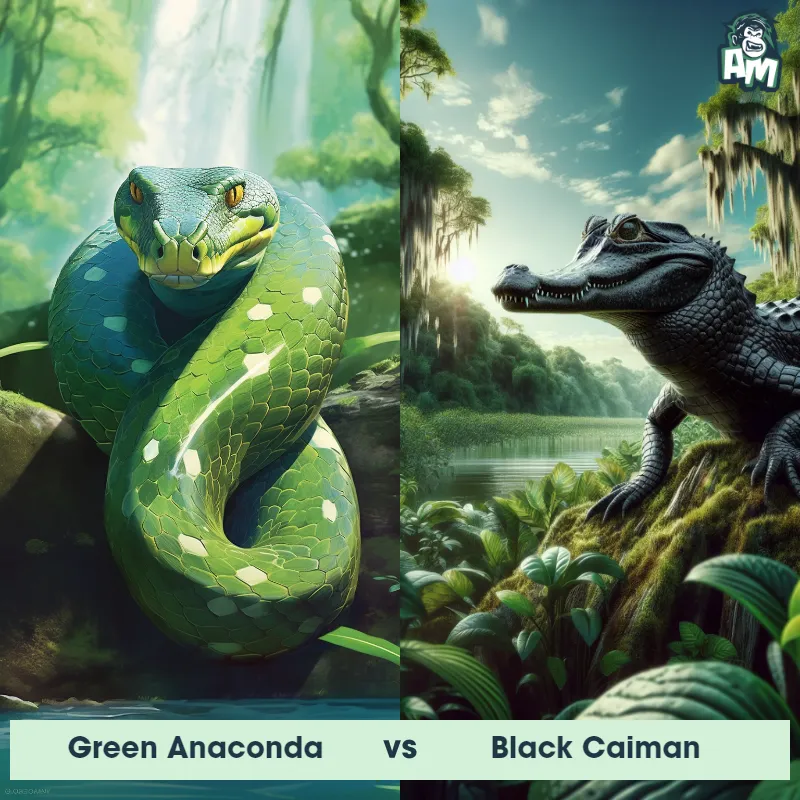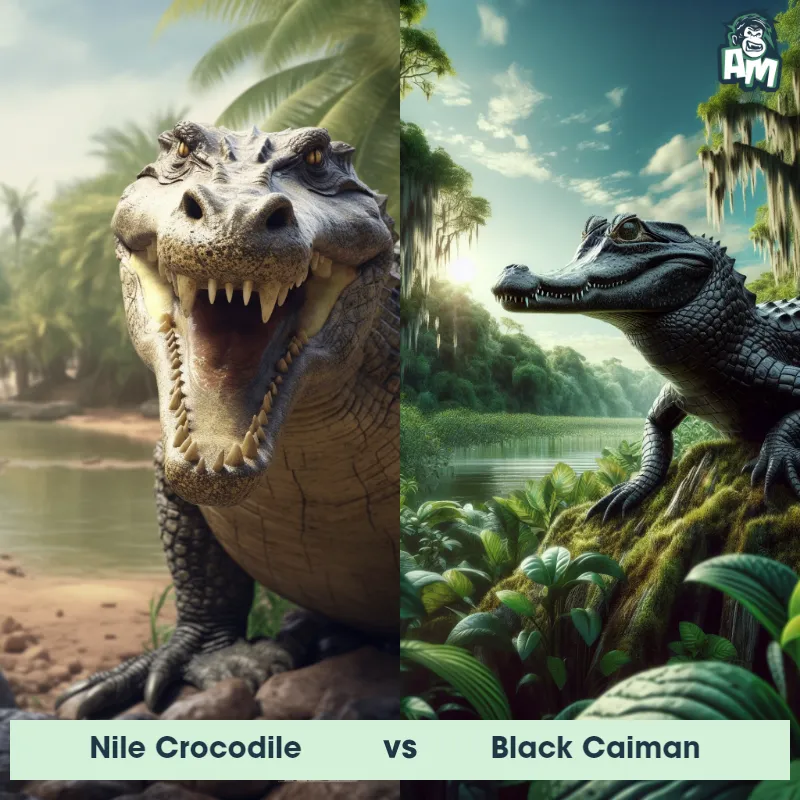The Black Caiman
The Black Caiman, also known as Melanosuchus niger, is a large, predatory reptile native to the Amazon basin in South America. With a length that can reach up to 5 meters 16 feet and weighing up to 700 kilograms 1,500 pounds, it is one of the largest members of the crocodilian family. It has a dark black coloration on its scales, which helps it camouflage in the murky waters of its habitat. The Black Caiman has a long, broad snout filled with sharp teeth and powerful jaws, enabling it to capture its prey with ease. Despite its large size, it is an excellent swimmer and can move swiftly in the water.

| Black Caiman | |
|---|---|
| Size | Up to 5 meters (16.4 feet) |
| Weight | Up to 500 kg (1,102.3 pounds) |
| Speed | 10mph (16km/h) |
| Key Strength | Powerful jaws |
| Biggest Weakness | None known |
| Scientific Name | Melanosuchus niger |
| Family | Alligatoridae |
| Habitat | Rivers and swamps |
| Geography | South America |
| Diet | Fish, birds, and mammals |
| Lifespan | 30 years - 70 years |

The Black Caiman
The Black Caiman, also known as Melanosuchus niger, is a large, predatory reptile native to the Amazon basin in South America. With a length that can reach up to 5 meters 16 feet and weighing up to 700 kilograms 1,500 pounds, it is one of the largest members of the crocodilian family. It has a dark black coloration on its scales, which helps it camouflage in the murky waters of its habitat. The Black Caiman has a long, broad snout filled with sharp teeth and powerful jaws, enabling it to capture its prey with ease. Despite its large size, it is an excellent swimmer and can move swiftly in the water.
Fun Fact: The Black Caiman is known for its patience and ability to remain motionless for extended periods while waiting for its prey to approach, making it an extremely skilled ambush predator.
| Black Caiman | |
|---|---|
| Size | Up to 5 meters (16.4 feet) |
| Weight | Up to 500 kg (1,102.3 pounds) |
| Speed | 10mph (16km/h) |
| Key Strength | Powerful jaws |
| Biggest Weakness | None known |
| Scientific Name | Melanosuchus niger |
| Family | Alligatoridae |
| Habitat | Rivers and swamps |
| Geography | South America |
| Diet | Fish, birds, and mammals |
| Lifespan | 30 years - 70 years |
Black Caiman Matchups
We use AI to simulate matchups between the Black Caiman and other animals. Our simulation considers size, strength, and natural predatory behaviors to determine the most likely outcome.
Black Caiman: Diet, Predators, Aggression, and Defensive Behaviors
What do Black Caimans eat?
Black Caimans are apex predators and primarily feed on fish, turtles, birds, and mammals. They have a diverse diet that also includes capybaras, deer, and sometimes smaller caimans.
Do Black Caimans have any predators?
As adults, Black Caimans are at the top of the food chain in their ecosystems and do not have natural predators. However, young caimans are vulnerable to predation by birds of prey, large fish, and other carnivorous animals.
Are Black Caimans aggressive?
Black Caimans are typically solitary and territorial animals, exhibiting aggressive behavior towards other caimans when defending their territory or during the mating season. They may also display aggression if they feel threatened or cornered.
Do Black Caimans fight?
Black Caimans are known to engage in territorial disputes with other caimans, especially during the breeding season. These fights can be intense and may involve displays of aggression, vocalizations, and physical combat to establish dominance.
How do Black Caimans defend themselves?
When threatened, Black Caimans rely on their powerful jaws and sharp teeth as their primary defense mechanism. They may also use their muscular bodies to intimidate or attack potential threats, often opting to retreat into the water for safety.
What is the biggest weakness of Black Caimans in a fight?
Despite their formidable size and strength, the eyes and snout of Black Caimans are vulnerable areas in a fight. A well-aimed strike to the eyes or snout can incapacitate a caiman and give its attacker an advantage in a confrontation.
Fun Fact: Unlike most other crocodilians, Black Caimans have a bony ridge on their snout, which acts as a sensory organ, providing them with the ability to detect slight vibrations in the water. This adaptation allows them to locate their prey even in the dark or turbid waters of the swamps.
Fun Fact: As extraordinary mothers, female Black Caimans build nests made of vegetation close to the water's edge, where they lay their eggs. They exhibit parental care by fiercely guarding the nests until the eggs hatch, at which point she will help the hatchlings break out of their shells by gently rolling the eggs between her teeth.
















